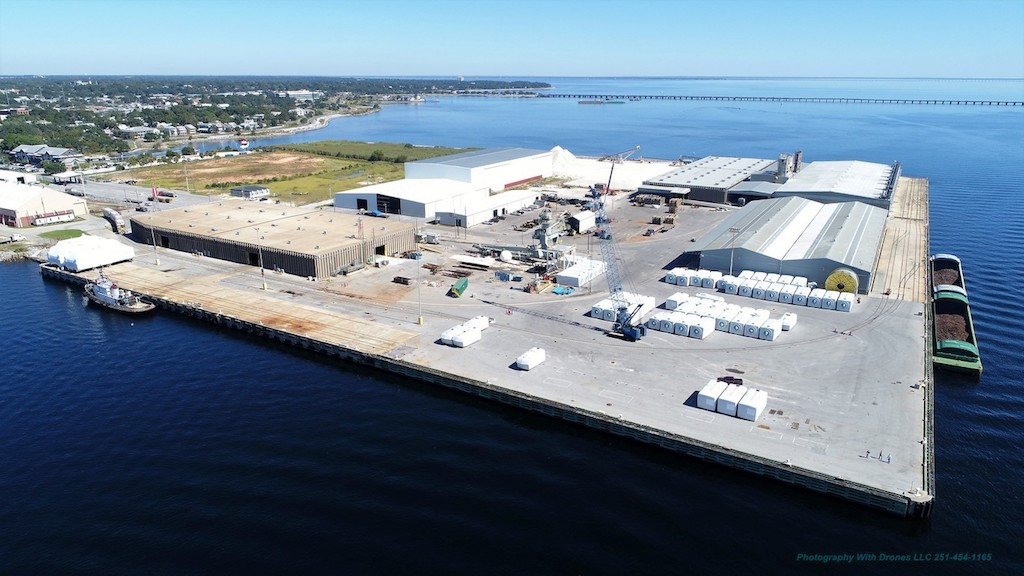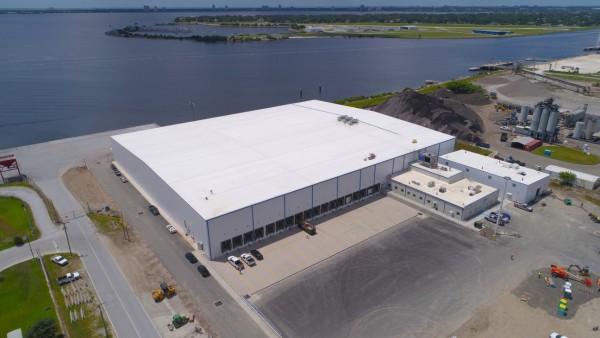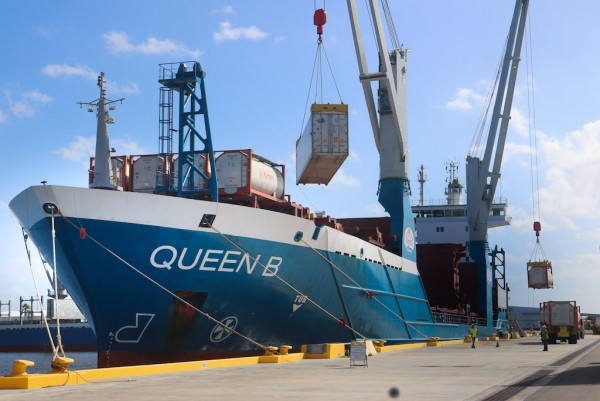Seaports of Florida’s Gulf Coast are readying to handle greater activity in a variety of sectors, from support of offshore energy exploration to shipping of forest products to handling of refrigerated produce to moving more containers.
Starting at the far west end of Florida’s Panhandle, heading east then south, to the Tampa Bay area, this is what’s going on at ports along the Sunshine State’s Gulf Coast:
While the recent decline in offshore oil and gas exploration has put a bit of a damper on activity related to vessel support, leaders of city-owned Port Pensacola are actively engaged in an assertive marketing effort and have plenty of diverse developments offering encouragement, led by the initiation in February of weekly World Direct Shipping service with Mexico. (See industry profile on page 24)

Florida’s westernmost port looks to complete by summer a $2 million warehouse modification and crane installation project that should allow on-port tenant fabrication of large components for offshore energy support vessels. And, by fall, the port expects to release a bid package related to rehabilitation of its Berth 6, an undertaking initially estimated to have a $14 million price tag.
Progress also is occurring on the ferry front. A $1 million floating dock landing has been finished to facilitate a May startup of passenger excursions between Port Pensacola and historic Fort Pickens on the Gulf Islands National Seashore, in advance of targeted completion later in the summer of a $2.1 million ferry terminal at the port.
Port Panama City
About 100 miles east of Pensacola, the Panama City Port Authority looks to have completed the construction of the first phase of its new East Terminal development by the end of 2018.
The initial stage, for which ground was broken in July, includes a 260,000-square-foot forest products warehouse, as well as a 40-car-capacity rail yard, expected to provide terminal services to shippers in addition to WestRock Co., which currently uses a portion of the 41-acre site in support of exports from its adjacent paper mill.

Also last July, Port Panama City executed a new terminal services agreement with Bethesda, Maryland-based Enviva Partners LP, calling for a minimum commitment of 500,000 tons a year of wood pellets to be exported from the port through 2023. The first shipment of wood pellets from Panama City took place in April 2008, and, since that time, more than 6 millions tons of the commodity have been shipped from the port’s bulk facilities. Enviva’s pellets come to the port by rail from the company’s manufacturing facility in Cottondale, about 50 miles north-northeast of the port.
Port of Port St. Joe
Another 35 miles to the southeast, the Port St. Joe Port Authority is continuing its deliberate efforts to bring substantial cargo shipping action back to Port St. Joe, which has yet to fully recover from the closure two decades ago of the St. Joe Co. paper mill and box plant.
Causes for hope include last year’s Florida Senate appropriation of $6 million for the Port of Port St. Joe, including $1 million for dredging the turning basin. Bringing the depth of the port channel to as many as 37 feet is seen as critical.
Port authority leaders are working with Gulf County officials in pursuit of funding for a floating dry dock via the Triumph Gulf Coast oil spill settlement fund that was established following the 2010 Deepwater Horizon explosion. Also, woodchip firm International Wood Group is moving ahead with plans for a site where Arizona Chemicals closed its plant in 2009, including seeking rail tonnage throughput guarantees that would facilitate advancement of repairs by Genesee & Wyoming Co. to its AN Railway short-line link to CSX Transportation’s main line.
Port Tampa Bay
A new on-dock cold-storage facility is the latest cargo-related development at Port Tampa Bay. The 135,000-square-foot chilled warehouse, operated by Tampa-based Port Logistics Refrigerated Services, aims to be a cost-effective link between Latin American produce growers and the dynamic Central Florida consumer market and beyond. The facility offers direct access to the Interstate 4 corridor and its heavy concentration of distribution centers between Tampa and Orlando.

Meanwhile, Port Tampa Bay is engaged in a public-private partnership including Tampa Electric Co., phosphate producer The Mosaic Co. and multiple governmental entities for maritime development and related industrial uses of its Port Redwing area – an assemblage of about 270 acres in southern Hillsborough County – including efforts to deepen and widen Big Bend Channel.
But Port Tampa Bay officials seem to be most excited about advances on the cruise front, with both Carnival and Royal Caribbean now offering cruises to Cuba and the port’s total passenger count for 2017 nearing 1 million. The port set a single-day record for cruise activity Feb. 2, as three vessels combined to account for 12,949 disembarkations and embarkations.
Port Manatee
Having set container volume and total cargo tonnage records in its fiscal year ended Sept. 30, 2017, Port Manatee, a longtime hub for Del Monte Fresh Produce N.A. Inc. banana and pineapple imports, is seeing a doubling of its World Direct Shipping service with Mexico with addition of a second weekly sailing by WDS, which began making 2 1/2-day transits across the Gulf of Mexico between Port Manatee and the Veracruz port of Coatzacoalcos in late 2014.

Located near Tampa Bay’s entrance, Port Manatee also is beefing up its ability to handle projects and other oversized cargo with the mid-2017 completion of reconstruction of its Berth 9. The fortified 625-foot-long berth can now accommodate uniform loads of as many as 1,000 pounds per square foot. Three-quarters of the Berth 9 project’s $10.3 million cost was funded by the Florida Department of Transportation.
At the same time, the International Trade Hub at Port Manatee continues to strengthen global commercial ties, having in the past year hosted delegations from Japan, Ecuador, Chile, Colombia, Guatemala, Costa Rica, El Salvador and the Dominican Republic.





